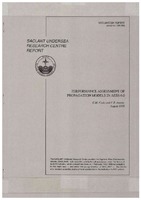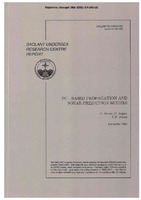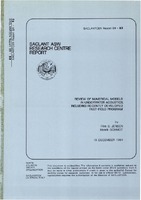Ocean-bottom reflectivity (a point of view)
| dc.contributor.author | Santaniello, S. R. | |
| dc.contributor.author | DiNapoli, Frederick R. | |
| dc.date.accessioned | 2018-10-11T14:10:09Z | |
| dc.date.available | 2018-10-11T14:10:09Z | |
| dc.date.issued | 1975/10 | |
| dc.identifier | 310 | |
| dc.identifier.govdoc | CP-17/4 | |
| dc.identifier.uri | http://hdl.handle.net/20.500.12489/723 | |
| dc.description.abstract | The analysis procedures for extracting bottom loss values from pulsed acoustic signals that have interacted with the ocean bottom do not inherently consider sub-bottom refraction and reflection of sound, which are important effects at low frequencies (i.e.; < 500 Hz). Sound returning from the sub-bottom can constructively interact with sound reflected from the water-sediment interface, yielding negative bottom loss results. To support this premise a Fast Field Program (FFP) time domain model simulation of a bottom loss measurement was performed in which the lateral wave was the only additional arrival interacting with the bottom reflected wave arrival. The simulation demonstrates a plausible cause for anomalous bottom loss results and suggests that propagation models must accommodate the environmental description of both the water column and ocean bottom. | |
| dc.format | 13 p. : ill. ; digital, PDF file | |
| dc.language | English | |
| dc.publisher | NATO. SACLANTCEN | |
| dc.source | In: Ocean Acoustic Modelling (SACLANTCEN Conference Proceedings CP-17), Part 4, 1975, pp. 14-1 - 14-13. | |
| dc.subject | Acoustic reflection | |
| dc.subject | Acoustic reflection loss | |
| dc.subject | Seafloor | |
| dc.subject | Seafloor sediments | |
| dc.subject | Low frequency acoustics | |
| dc.subject | Acoustic models | |
| dc.subject | Acoustic propagation | |
| dc.title | Ocean-bottom reflectivity (a point of view) | |
| dc.type | Papers and Articles | |
| dc.type | Conference Proceedings (CP) |
Files in this item
| Files | Size | Format | View |
|---|---|---|---|
|
There are no files associated with this item. |
|||


